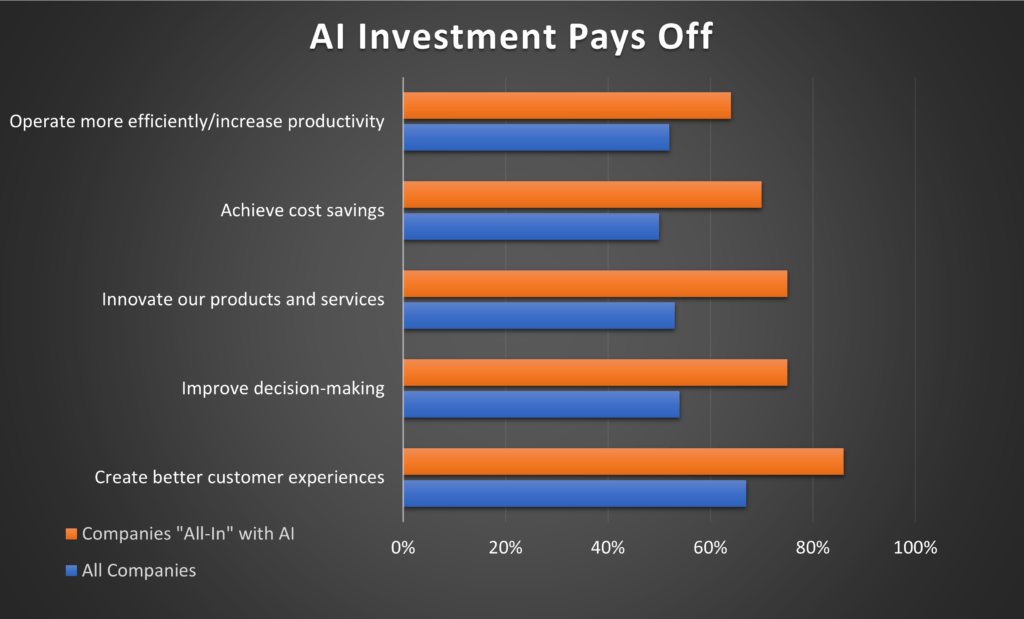
Despite the difficulty of implementing Artificial Intelligence, investment is growing. According to a recent study published by PWC, the adoption of AI is up from 18% from last year. Fifty-two percent of the survey respondents accelerated AI adoption because of the COVID-19 crisis. This type of behavior only comes if companies are capturing business value from their AI investment. They are.
AI isn’t simply an option that can be added to a software application as an upgrade. To fully capture the value, AI must be thoughtfully applied to a data model, analytics need to be applied to the results to understand trends, and then actions need to be performed to change how business processes are performed. Those taking the time to do it right are now reaping the rewards, ranging from higher revenue growth to improved decision support to higher customer satisfaction.
Read this article for a background on defining artificial intelligence, Demystifying Artificial Intelligence vs. Machine Learning
Where to Focus AI Investment?
The PWC research confirms that value is being captured, with those surveyed that implemented AI enterprise-wide being far more optimistic about growth: 25% expect to increase revenue, compared with 18% for all companies (source). Given the nature of an AI investment, expect this gap to continue to grow as new benefits expand from continued intelligence gathering and process improvement achievement.
Responses from the survey on value creation were compelling:

Maximizing Your AI Investment
The good news is that those who are committed to maximizing their Artificial Intelligence investment can do so in several ways. Based on the insights from the PWC survey, here are three suggestions.
- Think about AI Investment as a Journey – an investment in AI is not a one-time purchase. Rather, it is a continuous process that can lead to a series of efficiency and performance improvement. For example, once you have implemented an Artificial Intelligence system on how to standardize data extraction for one part of your business, you can then consider how to apply that logic or process to other areas of your business. As more data is captured and cleansed, new insights will be revealed providing yet further opportunities for process improvement.
- Understand the Cost – it is more than just purchasing software, hiring talent, or outsourcing the functionality. You need to invest in upfront costs, such as taking the time to evaluate current processes, identify data sources, cleanse existing data, change current business process, and perhaps even hiring new employees based on new skill sets. With this clear understanding, it will be easier to then justify future investment.
- Pick the Right Operating Model – it is very important to go forward with a standardized process when incorporating AI. If anything changes, then new or modified algorithms will be needed triggering a new learning process. When at all possible, try to stick to a consistent approach to data collection, process governance, and model usage across your company to fully scale and automate the impacted processes to capture all potential benefits.
Become an AI Leader
Leaders evaluate new technology investments and then use a philosophy that continues to push for innovation and continued advances. Jim Collins referred to this cycle as a “flywheel” whereby once initial momentum begins, it can then be sustained with less effort and amplify performance and output.
An investment in AI can be maximized in a similar way. Increasing AI adoption leads to better intelligence on how your business operates, creating new opportunities for growth, cost-cutting, and performance improvement. While this may not be an easy task to undertake, it can be a strategy that leads to sustained competitive advantage for many years to come. We are still early in the adoption curve for AI, so most companies have just scratched the surface of the potential benefits.
